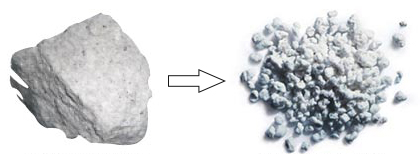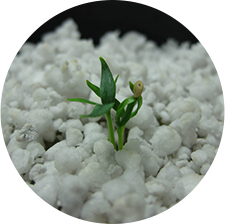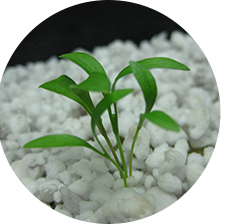Perlite, a good drip substrate
Perlite is used for growing on substratepure or mixed. But it is interesting to know where it comes from to understand its functions and advantages.
What is perlite?
Perlite is a natural volcanic rock. At the base it looks like sand containing water. It is industrially expanded by a heat treatment varying from 900 to 1200°C. Under the effect of heat, perlite expands from 4 to 20 times its volume and forms small porous grains with tiny cavities. Perlite can be visually compared to white litter grains, it is very light and friable.

Composition of perlite:
Silica, Alumina, Iron oxide, Titanium oxide, Lime, Magnesia, Sodium oxide, Potassium
Perlite as a substrate
Perlite is a very light and easy to handle substrate which makes its installation in a growing system simple and quick. However, we advise you to wear a safety goggle when handling it to avoid protective mask when handling it to avoid dust inhalation, and to moisten it beforehand to reduce the release of dust.
You can use the perlite as a substrate in a hydroponic drip system essentially.



You can also combine perlite with other substrates such as soil, coco fiber, peat, but in this case, perlite should not exceed 30% of the total substrate mix.
During the sowing/seeding phase perlite can be mixed with vermiculite in a 50/50 ratio.
However, it is also possible to mix for example 60% Coco, 30% clay balls and 10% perlite.
What are the advantages of perlite ?
For all growers using thehydroponics technique, perlite is very interesting chemically speaking thanks to its numerous properties:
- a neutral pH between 6.8 and 7.2 which allows a better control on the fertilization and the nutritive solution given to your plants.
- Thanks to its porosity, it has a great water retention capacity, up to 5 times its weight.
- Stable and inert, perlite will not attract any insects, unlike some potting soils.
- 100% ecological, perlite is a natural product.
- Perlite is easily eliminated, put it in the ground in your garden for example, it will turn into dust and disappear over time without leaving any trace.

